Bon Appétit – How to Set a Dinner Table
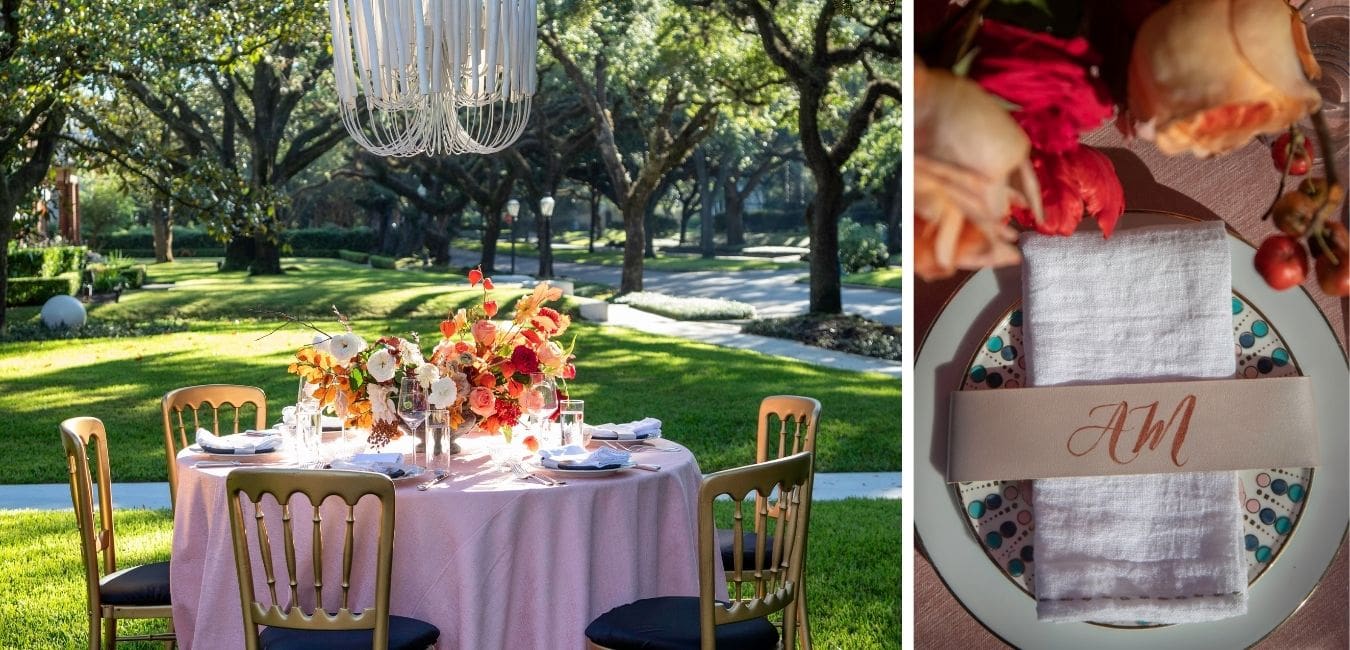
Summer 2020 was a quiet affair — lacking all the traditional hallmarks of the busiest entertaining season. Weddings were rescheduled and dinner parties were placed on hold as we all sheltered in place and stayed safer at home. Thankfully, the national vaccine roll-out is now well under way, with more than 247 million doses administered across the country. Today, over 32% of our population fully vaccinated. Now that all Americans over 18 are eligible for the vaccine, the Biden administration estimates we will be close to normal by Independence Day. After a year of smiling through masks and waving from six feet away, we have a lot of lost time to make up for! No matter your party plans for this summer, the first step in designing a stunning event is perfecting the tablescape. From casual al fresco dining to elegant indoor entertaining, creating the perfect tablescape goes a long way towards setting the mood for your event. Follow below for our tips on how to set a dinner table properly — whether for an intimate date night or a big backyard barbecue.
A Quick History of Dinner Parties: Table Setting Through the Ages
. ROMAN CONVIVIUM .
Historians and laypeople alike still marvel at the banquets of Rome — despite the fact that most occurred way back in the 1st century BCE. Historian Katharine Raff describes the menu and the culture of these ancient dinner parties in her paper “The Roman Banquet.” Her paper is part of The Met’s Heilbrunn Timeline of Art History Essays. Not only is Raff’s paper a fun read, but several tableware artifacts grace the header of her essay. Raff writes that Roman banquets — also called “convivium” — were extremely varied. They might be intimate or grand — entertaining a small group or “all the inhabitants of a city.” The most famous of Roman convivium, however, are not the public parties but the lavish “elite private banquets.” These banquets are described by Raff and contemporary sources as a kind of feast for the senses. During these parties, the host strove to impress his guests “with extravagant fare, luxurious tableware, and…entertainment.”
Some of the most expensive but popular foods included “raw oysters, lobster, shellfish, venison, wild boar, and peacock.” Of course, such an exhaustive and expensive meal “required an elaborate table service.” This table service comprised “numerous vessels and utensils that were designed to serve both functional and decorative purposes.” Goblets like these silver scyphi with relief decoration from the Met’s collection were prominently featured. They could be found alongside pieces made from “gold, bronze, or semi-precious stones [like] rock crystal, agate, and onyx.” The decor was impressive too. Each course was “enjoyed in a lavishly adorned setting” which included “floor mosaics, wall paintings and stucco reliefs.” Above is a reimagined Roman banquet, painted by Roberto Bompiani in the late 19th century.
. RENAISSANCE BANQUETS .
Nearly fifteen hundred years later, the true banquet was born. On the heels of devastation wrought by the bubonic plague, Western Europe enjoyed a period of relative bounty. Though banquets began in fourteenth century Europe as religious observances, they evolved to celebrate anything from weddings to court gatherings. Intricately curated meals, exquisitely crafted tableware and elaborate decor were all hallmarks of Italian Renaissance feasts. Nancy Delucia Real explains in her post “How to Eat Like a Renaissance Courtier” for the Getty Center’s blog.
To put it plainly, writes Real, “Italians were the trendsetters of European Renaissance dining.” In the 16th century, Italian aristocrats threw “enormous banquets with 500 to 750 courtiers in attendance.” The hosts commissioning brand-new tableware for each occasion. In fact, the Marchesa of Mantua Isabella d’Este, ”commissioned a set of…maiolica plates from artist Nicola da Urbino” for just one party. Courtiers ate buffet style at a long banquet table. They gobbled up heavily spiced foods “with two-tined forks” and drank local wine “from crystal glasses made in Murano.” Aristocrats of 16th century Italy were the first to pioneer wine pairings — a practice that soon became popular across Europe. Though Paolo Veronese’s 16h century painting The Wedding at Cana describes Christ turning water into wine, it accurately depicts a Renaissance banquet.
. VICTORIAN ERA DINING .
Victorian dinner parties were quite a bit more complex and formal than those of 16th century Italy or Ancient Rome. According to “The etiquette for Victorian dining” from the Grim’s Dyke Hotel in London, the tables of Victorian dinner parties were elegant and understated. This matched austere attitudes of the time. Unlike the Ancient Romans or Renaissance Europeans, the Victorian English and Americans preferred a natural setting without any garishness. Formal table setting of the Victorian era greatly resembled that of today’s formal dinner parties. Each included “a plate, two large knives, three large forks, a soup spoon, and a water goblet.”
When serving soup, salad or bread, a “small plate would be placed to the top left of the main plate.” Decorative elements included branches, flowers, candlesticks, “place settings and name cards.” They also mandated “the cleanest china and shiniest cutlery” as well as “fruit plates…in the center of the table.” Guests could not serve themselves and were advised not to speak either well or ill of the food during dinner. View above one modern recreation of a Victorian high tea in the dining room of Muncaster Castle in Ravenglass, Cumbria England.
. SALONNIERES OF PRE WAR PARIS .
Contemporaries across early 20th century Europe and the Americas hosted similar salons. However, dinner parties of Gertrude Stein and her wife Alice Toklas were second to none. As the Brooklyn Museum’s profile on Stein recalls, the pair often “hosted an eccentric salon at their home in Paris.” Together, they entertained “friends Pablo Picasso, Henri Matisse, and Georges Braque…[and[Sherwood Anderson and Ernest Hemingway.” Less important to Stein and her guests was the presentation of each dinner as was the food and conversation.
In her paper “Salons of Paris, Then and Now,” Rachel Hope Cleves writes about Toklas’ role. She notes that “Alice B. Toklas paid [enormous] attention to what she served to eat.” So much so, that when she wrote her autobiography, “her first attempt came out as a cookbook.” Writers, artists, collectors and other visionaries gathered around the Toklas-Stein table. It was crowded with “huge platters of chicken, ham, roast beef, and cucumber sandwiches.” Dessert was often “mountains of chocolate cakes, meringues, éclairs, strawberry tarts, and cheese twists.” Wine and champagne “flowed generously” during every salon dinner.
. MID-CENTURY BACKYARD BARBECUES .
Today’s dinner parties involve everything from crystalline banquets to park picnics. However, perhaps no American mid-summer tradition is quite as beloved as the backyard barbecue. According to the Smithsonian Institute, today’s burger and beer lovers have post-war tourists to thank for the tradition. The Smithsonian post “Backyard Cookout” notes that “after World War II, newly affluent Americans had the means and desire to travel.” Many found their way to South America, Southeast Asia and the Pacific Islands as well as more local destinations like Mexico and Hawaii.
Returning home, 1950s Americans wanted to keep the spirit of casual island life alive. As such, travelers “re-created these experiences in their new suburban backyards.” With tropical drinks in hand, “they cooked meals craved by a postwar meat-mad America.” Tiki glasses, plastic flamingos and a variety of yard games all emerged as Americans spent more time grilling outdoors.
Why Dinner Parties Matter: The Social Science of Eating Together
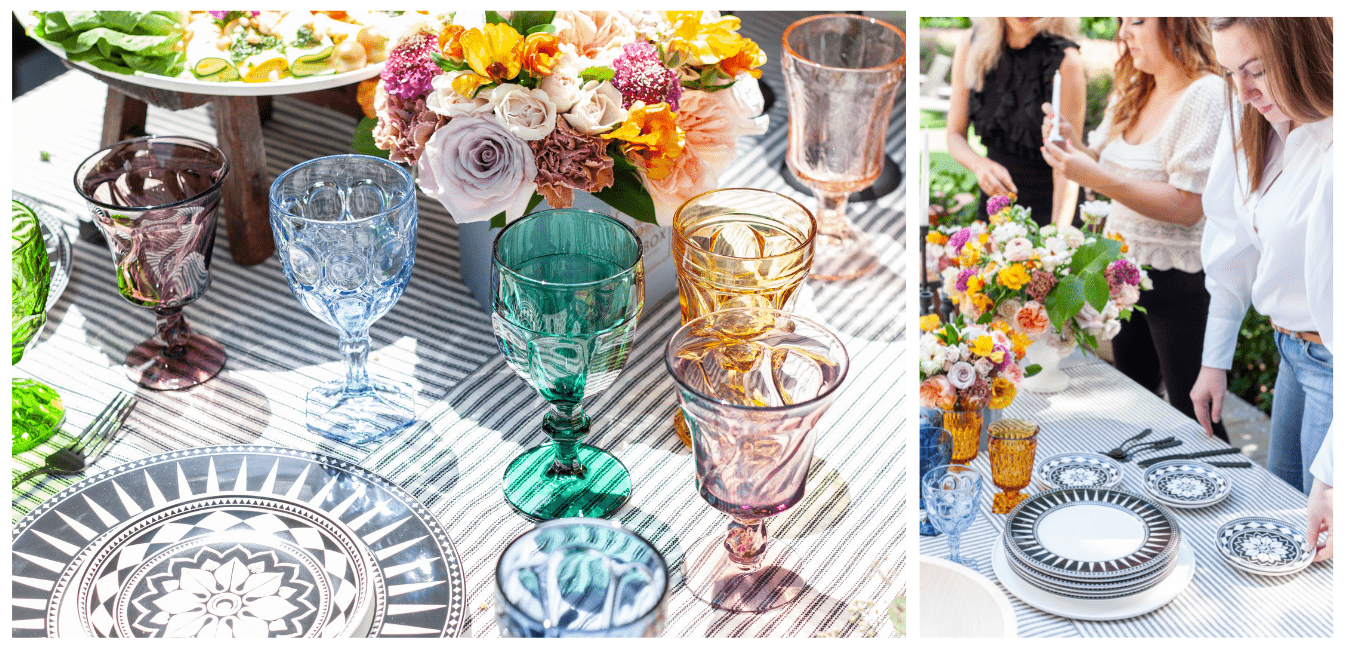
Though a curated meal and incredible vintage certainly leave an impression, nothing makes a meal quite like sharing it with another person. According to researchers, eating together actually has psychological and emotional benefits. Social science correspondent Shankar Vedantam explains in “Why Eating The Same Food Increases People’s Trust And Cooperation” for NPR’s Morning Edition. Quoting Ayelet Fishbach at the University of Chicago, Vedantam notes that food plays a role psychologically. Fisbach explains that “eating the same food suggests we are both willing to bring the same thing into our bodies.” This common experience — and low-level risk — makes people feel closer to each other, breeding “trust and cooperation.”
. S H A R I N G A M E A L M I G H T B E T H E E A S I E S T W A Y T O C O N N E C T .
A 2017 study conducted by researchers at the University of Oxford echoes Fishbach and Vedantam. For this project, researchers pored over data from an Eden Project UK national survey. The survey recorded how often people ate socially, how many friends they had and how happy they felt in day-to-day life. The survey also recorded scores from each participant regarding their “connection to their community” and their “overall satisfaction with life.” Results of the Oxford study suggest that “communal eating increases social bonding and feelings of wellbeing.” It also “enhances one’s sense of contentedness and embedding within the community.”
Professor Robin Dunbar — conductor of the study — believes communal eating might be an evolutionary tactic. Dunbar explains results of the study point to the idea that “social eating has an important role in the facilitation of social bonding.” Furthermore, “communal eating may have even evolved as a mechanism for humans to do just that.” Respondents to the survey also noted that sharing a meal was the easiest way to connect with a friend or family member. In fact, “75% of respondents recognized that making an effort to see someone more often was best done by sharing a meal.”
How to Set a Dinner Table Properly
. T H E E S S E N T I A L S .
Most dinner parties are planned at least a week in advance. However, intimate dinners with partners, parents or close friends often pop up out of nowhere. In the event your college roommate flies in unexpectedly or you simply feel like a night in, it helps to have a few basics. If you never find yourself hosting an impromptu gathering, these eight essentials serve perfectly as the foundation for scheduled affairs.
. # 1 A S E T O F S O L I D W H I T E D I S H E S .
Patterned dishes quickly become dated, wedding china often feels too formal and colored sets might not always match the mood of your event. As such, keeping a full six set of solid white dishes is your best bet. In her article “Be an entertaining pro” for Southern Kitchen, Heidi Rew notes “you can use white dishes for any occasion.”
They can be dressed up with crystal glassware and specialty flatware or dressed down with organic accessories. Unlike a paisley print or nautical stripe, “they never go out of style” or fit only a single theme. Rew notes that “you can always add more” to your table setting, particularly with “napkins, appetizer plates or chargers to layer.” Keep a set of both quirky and elegant charger plates on hand, so you are always prepared for any event!
. # 2 A L A R G E S E R V I N G B O W L O R C U T T I N G B O A R D .
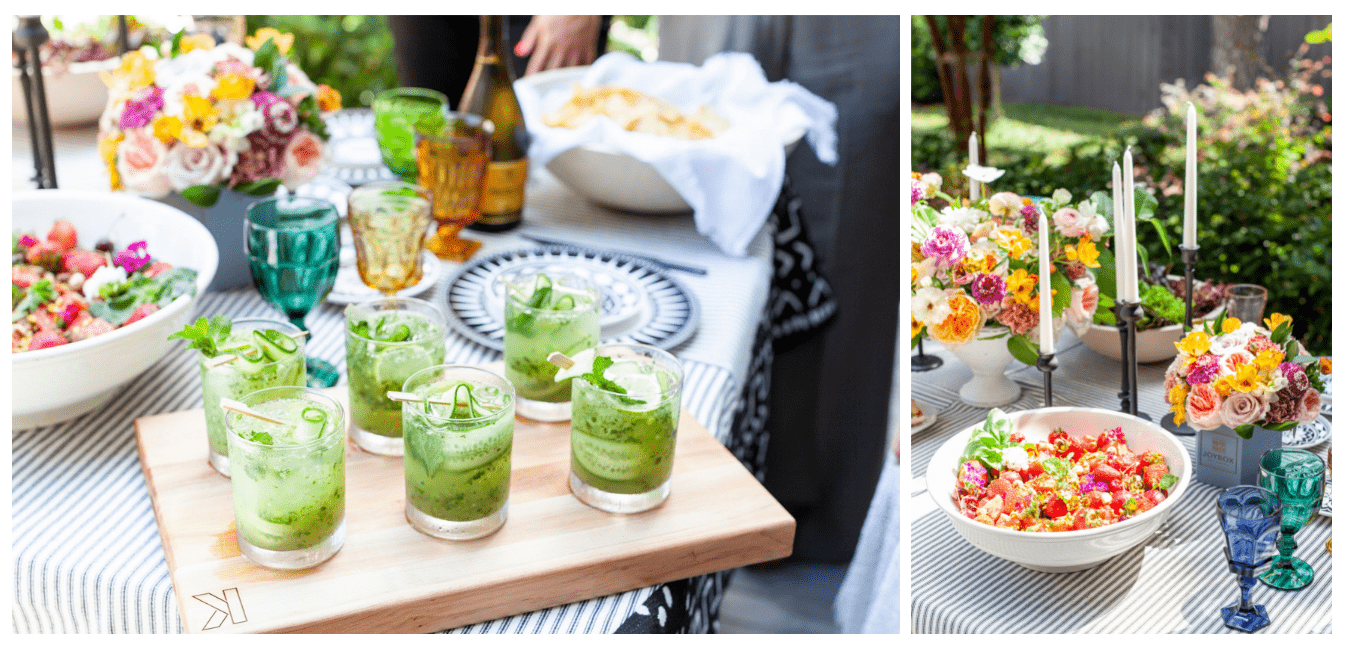
A large serving bowl or butcher’s block can create an instant centerpiece for your table setting. It is stunning either filled with a salad, topped with charcuterie or left intentionally empty. A solid acacia piece like this Williams Sonoma Wood Salad Bowl is just as beautiful filled with mozzarella and persimmons as it is unadorned.
The best part about having a serving bowl or butcher’s block on hand is that you can use them in everyday life too. In an article for Food & Wine, Megan Soll writes that a butcher block can be used for meal prep during the week. Furthermore, “a big bowl is as useful for popcorn on a quiet movie night as it is for…a dinner party.”
. # 3 A C A R A F E O R D E C A N T E R .
Even a simple decanter or carafe can add a lot to your table setting. This is particularly so if the party was thrown together at the last minute. Not only do they add a bit of flair to your table setting, but they can also disguise the quality of wine. UC Davis Professor Andrew L. Waterhouse explains in his article “How does decanting red wine affect its taste? And why is it suggested for red wine, but not white?” for Scientific American.
Professor Waterhouse writes that “decanting accelerates the breathing process, which increases the wine’s aromas from natural fruit and oak.” If the only bottle you have in your pantry or wine rack is under a year old, Waterhouse recommends decanting before serving. He notes that decanting “softens the taste of the tannins that cause harshness and astringency in young wines.”
. # 4 C L A S S I C A L L Y S H A P E D W I N E G L A S S E S .
Separate sets of champagne flutes and red wine glasses is ideal. However, this might not be practical for every home — especially those entertaining in city apartments with little storage. Opting for a set of multifunctional wine glasses is an excellent choice for year round entertaining. Instead of swapping out coupe glasses for tumblers, consider a versatile set in a classic shape.
In her article “The One and Only Wine Glass You Need, According to Sommeliers” for Kitchn, Geraldine Campbell offers a solution. Campbell asks Andre Mack — sommelier and founder of Mouton Noir Wines — which glass works best for all wine types. Mack recommends purchasing “‘crystal-clear and thin’” glasses that have a “‘stem with a bowl that’s larger than the top of the glass.’” This type of silhouette is “suitable for white, red, and bubbles.”
. # 5 A D E C O R A T I V E V A S E O R P O T T E D P L A N T .
Whether pulled from your patio or kitchen windowsill, a potted plant can serve as a beautiful addition to the center of the table. Similarly, a decorative vase can add interest even without flowers or herbs inside. In some cases, a neutral houseplant or empty vase is more effective as the centerpiece of a proper table setting. This is because it is less likely to interfere with the aroma of the food or wine.
. # 6 M O D E R N, M O N O C H R O M A T I C F L A T W A R E .

Monochromatic flatware is another must-have for versatile dinner party planning. Two-toned white and stainless steel flatware might work well for casual breakfasts and elaborately molded flatware might fit a fancy affair. However, neither is versatile enough to function properly for all kinds of dinner parties. Instead, opt for a classic set of silverware. Choose a set complete with dessert spoons, salad and entree forks, a butter knife, steak knife and soup spoon for each setting.
. # 7 P L A C E M A T S I N S T E A D O F A T A B L E C L O T H .
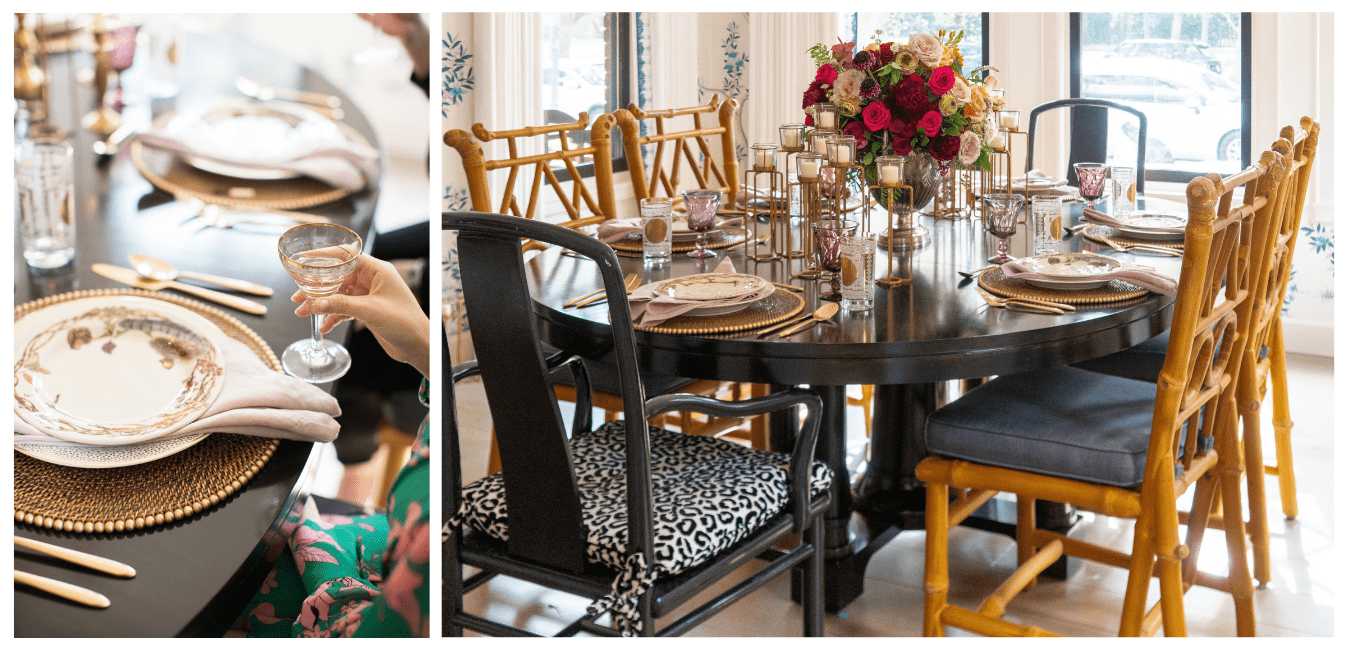
Tablecloths certainly add elegance and personality to a table setting. However, we rarely pull one out of the linen closet sans wrinkles, creases or bizarre stains. Instead, we recommend you set a table with placemats instead of a tablecloth, except when serving buffet style. Placemats are often a better choice than tablecloths. This is because they add depth to a tablescape while protecting the table itself. In her article “The Best Placemats” for The Strategist, Jenna Milliner-Waddell explains why placemats are better basics than the traditional tablecloth.
Milliner-Waddell writes that placemats “protect table surfaces against heat, cold, and food.” This is “especially important for delicate or vintage pieces” featuring wood, marble, stone or lacquer. Furthermore, placemats “are more versatile” than tablecloths, because they fit any type of surface — from banquet to bistro tables. If you choose to go with a tablecloth instead of placemats, a wrinkle-resistant fabric like bamboo or Tencel might be your best bet. We do recommend keeping one tablecloth on hand for serving tables — as pictured above.
. # 8 A T T R A C T I V E C O N D I M E N T J A R S .
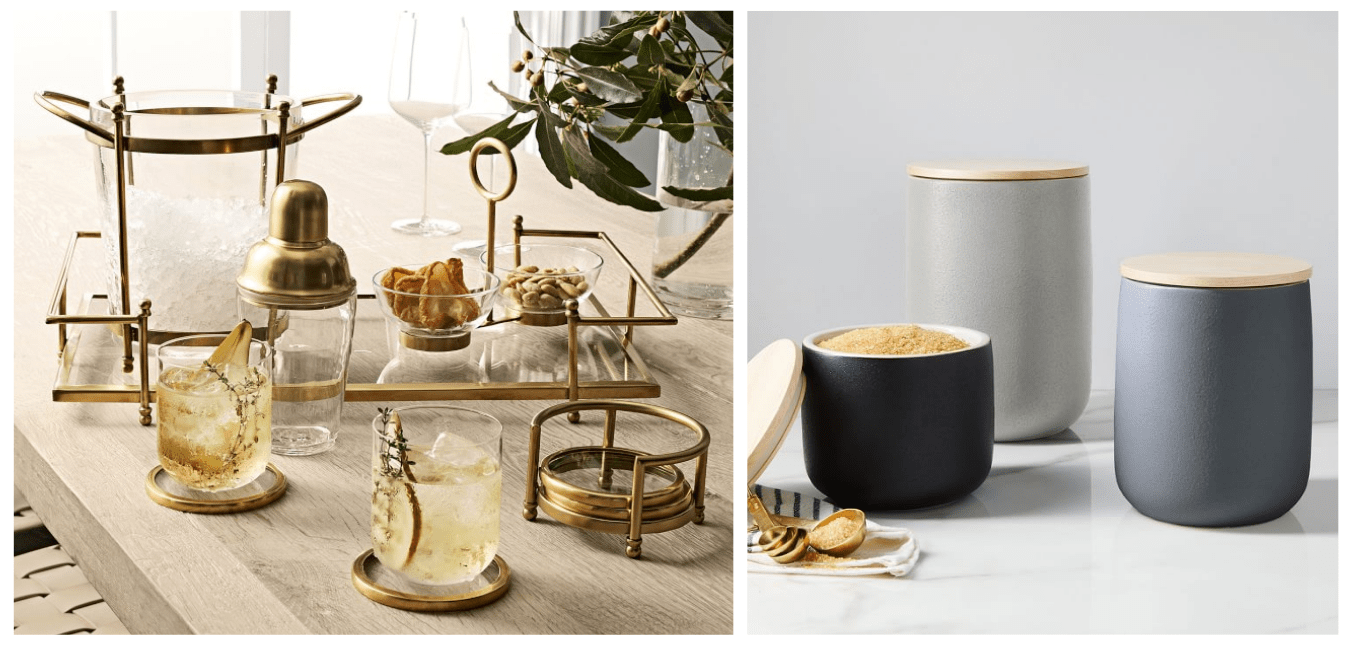
The Vogue Australia article “Five essentials every dinner party needs” notes that spices are much-needed. In fact, “something you can’t go past, but is often forgotten…is having the right condiments for the meal you are serving.” Of course, essentials like “salt and pepper are a must and a basic condiment that should definitely be on the table.”
Though ground spices and a variety of condiments are certainly important, so are the vessels they are presented in. Having a set of matching — or thematically similar — condiment jars ties a table setting together in an instant. We love this delicate Antique Brass and Glass Condiment Dish from Williams and Sonoma and these minimalist Kaloh Kitchen Storage Jars from West Elm.
How to Set an Elegant Dinner Table
In her article “How to Set a Formal Dinner Table” for Martha Stewart, Hannah Baker offers tips from the queen of elegant entertaining herself. Unlike with casual indoor dining or al fresco entertaining, there are a few rules to formal table setting. These include the arrangement of cutlery, glassware and place cards. Note the cute graphic above for proper placement of each item in your table setting. Baker suggests hosts and hostesses think ahead when setting the table, adding champagne glasses only when a toast is expected.
The host or hostess should also keep in mind how the food will be served, placing the plates and utensils in order of use. When entertaining a larger party, Baker recommends the host set up seating in advance to ensure ease of transition and comfort for each guest. Last but not least, once the main course has been cleared, the host or hostess must reset the table for the dessert course.
. C E N T E R P I E C E S F O R F O R M A L D I N N E R P A R T I E S .
As for the tone of your formal tablescape, experts recommend opting for warm-toned metals, carefully crafted ceramics and delicate flatware. Elegantly — but never too intricately — folded napkins add a freshness to any formal table setting. A large but low centerpiece works best — adding visual impact without blocking faces from across the way. Rather than a small bouquet of flowers, opt instead for a sprawling display of seasonal vegetables or crawling vines.
How to Set an Al Fresco Dinner Table
Whether an outdoor rehearsal dinner or casual backyard barbecue with friends, al fresco dining always feels fresh and invigorating. In her article “Al fresco dining at home” for Harper’s Bazaar, Ella Alexander offers a few tips for setting the stage. First, Alexander suggests using “different items for dining inside and outside,” leaving delicate glassware indoors. Alexander notes that she often opts for “more rustic plates [and] antique cutlery which has a gentler patina and smoky glassware.” They are perfect “for a table that works far better with the greenery of [her] garden.”
Colorful napkins, flickering candles and neutral tones also work the best outdoors because they allow the beauty of nature to take center stage. For smaller parties, Alexander recommends laying a runner instead of a tablecloth. This is because “runners placed across a larger table can make it feel more intimate.” They do so “by reducing the sense of ‘empty’ space if there are only four people or so.” When setting the table, consider this guide for buffet dining from @savvy_abode on Instagram.
How to Set an Informal Dinner Table
Both perfect for everyday use and casual entertaining, the basic table setting is as versatile as it gets! In her article “How to Set a Table” for Architectural Digest, Hadley Keller offers seven easy steps to creating a casual tablescape. First, Keller set a table with a place mat instead of a tablecloth. Next, hosts should set the dinner plate “in the center of the table setting,” topped by a salad plate and surrounded by cutlery. As with formal dining, the entrée and salad forks should be set on the left while the knife and spoon are on the right. Glasses — whether for wine or water — should be placed above the plate to the right. A simple centerpiece — like a bowl, cutting board or houseplant — works perfectly well here!
Not the Host? What to Bring to a Dinner Party
The pressure is off for creating a stunning tablescape and getting the cutlery placement just so. However, guests also bear a certain degree of responsibility. As such, we leave you with a few tips on what to bring to a dinner party as a guest. Though you are the most important element to bring along, Alyssa Brown offers three additional suggestions in an article for Martha Stewart. Brown writes that guests should avoid “bringing along an unexpected dish” that could upend the host’s plans for dinner.
Instead, “the best thing you can bring to a dinner party is a token of your appreciation.” This might include a favorite “bottle of wine, a box of chocolates, or gourmet cookies for the host.” As mentioned above, you are the most important thing to bring to a dinner party. However, Brown specifies guests should bring “their best self.” They should arrive dressed correctly and brimming with polite enthusiasm. Lastly, guests should arrive on time and leave the host a final parting gift of knowing when it’s time to leave!


